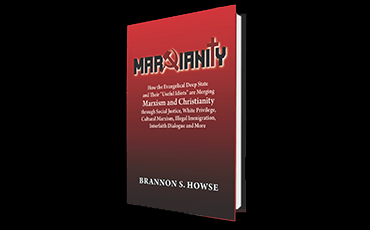What We've Got Here is a Failure to Communicate!
The Issachar Report<?xml:namespace prefix = o ns = "urn:schemas-microsoft-com:office:office" />
1 Chronicles 12:32
Dennis A. Wright, D. Min.
What We've Got Here is a Failure to Communicate!
It's been forty years since I first saw Strother Martin utter these unforgettable words to Paul Newman in the 1967 classic Cool Hand Luke. What a movie! To be sure, Newman went on to mock Martin later in the movie by saying the same thing about Martin. Well, once again, these words are appropriate: "What we've got here is a failure to communicate!"
Pope Benedict XVI has ignited controversy across the world by approving a document, Dominus Iesus, which states that non-Catholic Christian communities are either defective or not true churches, and the Roman Catholic Church provides the only true path to salvation. "Christ 'established here on earth' only one church," said the document, reasserting the primacy of Catholicism.
The London Times leads off with these words: "The <?xml:namespace prefix = st1 ns = "urn:schemas-microsoft-com:office:smarttags" />Vatican has described the Protestant and Orthodox faiths as 'not proper Churches' in a document issued with the full authority of the Pope." "Dominus Iesus" said that the Orthodox church suffered from a "wound" because it did not recognize the primacy of the Pope. The wound was "still more profound" in Protestant denominations, it added. This document explains that other Christian communities such as Protestants "cannot be called 'churches' in the proper sense" since they don't have what's known as apostolic succession that is, the ability to trace their bishops back to the original Twelve Apostles of Jesus. It was "difficult to see how the title of 'Church' could possibly be attributed to them", said the statement from the Congregation for the Doctrine of the Faith.
Vatican sources said that the document was an attempt to resolve "confusion" caused by the apparent conflict between the Pope's assertion on his election two years ago that Christian unity was a priority and his insistence in "Dominus Iesus", issued in 2000 when he was Cardinal Joseph Ratzinger that Anglican, Protestant and Orthodox Christians did not belong to "proper" churches. Father Augustine Di Noia, a senior doctrinal official at the Vatican, insisted that the Catholic Church was not "backtracking on ecumenical commitment. But it is fundamental to any kind of dialogue that the participants are clear about their own identity. That is, dialogue cannot be an occasion to accommodate or soften what you understand yourself to be."
The "failure to communicate" does not rest with Benedict XVI, but with we apologists who understand that this precept that Roman Catholicism is "the one true Church of Christ" is not something new, but has been orthodox Roman Catholic doctrine for centuries. The Second Vatican Ecumenical Council (opened in 1962 by Pope John XXIII and closed in 1965 by Pope Paul VI) certainly gave the Roman Catholic Church a more ecumenical outlook, but it did not change their core belief in the Catholic dogma that "there is no salvation outside of the Catholic Church" (The American Ecclesiastical Review, CXXVII, 4 [Oct., 1952], 307-15).
This belief is rooted in the Catholic dogma of Apostolic Succession, the concept that the Apostle Peter was the first Roman Catholic pope. But was Peter the first pope and has there been an unbroken line of succession down through the centuries to Benedict XVI (the 166th pope)? The answer to both questions is: "Absolutely not!"
Part of the problem stems from what Jesus said to Simon Peter in Matthew 16: "And I tell you that you are Peter, and on this rock I will build my church, and the gates of Hades will not overcome it. I will give you the keys of the kingdom of heaven; whatever you bind on earth will be bound in heaven, and whatever you loose on earth will be loosed in heaven." [1]
Every Greek scholar understands that "Peter" is the Greek word "petros" (which means "a little rock") and that Jesus used a different word for the "rock" upon which he would build his church. This is "petra" (which means "a massive strata of rock"). Distinguished Greek scholar A.T. Roberston says: "On this rock (ἐπι ταυτῃ τῃ πετρᾳ [epi tautēi tēi petrāi]) Jesus says, a ledge or cliff of rock like that in 7:24 on which the wise man built his house. Πετρος [Petros] is usually a smaller detachment of the massive ledge." [2]
Thus, Jesus is not saying that He will build His church upon Peter, but upon Himself! Ephesians 2:20 says that the church is "built on the foundation of the apostles and prophets, with Christ Jesus himself as the chief cornerstone." [3] It should also be pointed out that Peter never claimed supremacy for himself.
The Rise of the Papacy
So where did the Roman dogma of Apostolic Succession come from? After the Church fathers Ireneaus and Tertullian had endorsed Rome as the apostolic city, Clixtus I (217-22) proclaimed the exceptional position of the Roman bishop against the opposition of Tertullian and Origen, and thereby became the creator of the concept of the Papacy. The Church father Cyprian defended the primacy of Peter in terms of the honor due to him, but he was convinced of the legal equality of all bishops. The four patriarchates of Jerusalem, Antioch, Alexandria, and Rome were placed on a level of 'spiritual equality' by the Council of Nicea.
After Damasus I (366-84) asserted the teaching authority of the Roman bishop on the basis of the legacy of Peter the evolution from Roman bishop to Pope (Papa) began and Theodosius the Great acknowledged the Bishop of Rome as guardian of the true faith and supreme authority. Siricus (384-99) composed papal letters, borrowing from imperial degrees in form, which testified in the identity of Pope and Peter.
The First Authentic Pope
Leo I, the Great, (440-61) was perhaps the first authentic pope and is sometimes called the "father of papacy." During his pontificate the Western Roman Empire disintegrated and in the East theological differences with the Roman church flared up. Leo successfully enforced his authority by declaring that papal power was granted by Christ to St. Peter alone, and that power was passed on by Peter to his successors in Rome. Leo further enhanced the prestige of the papacy when he persuaded the Huns not to attack Rome, and the Vandals not to destroy Rome when they occupied it three years later.
Gregory and the Church
Pope Gregory the Great (540-604) became the founder of the worldly power of the papacy and gradually the secular ruler of the city of Rome. He is counted one of the Church Fathers, along with Jerome, Augustine and Ambrose. He earned this not only for the activities already cited, but also for his writings. One of the most influential of these was his Book of Pastoral Care, a handbook of common-sense instructions to preachers and bishops. It was one of the first books ever written in English (was translated from Latin original) and was widely read throughout Middle Ages. Gregory also wrote music and is the creator of the Gregorian chant. Gregory set the Church of Rome firmly on the path to temporal power; he was the real founder of the medieval papacy. (Quoted from the Penguin Atlas of History)
More Recent Examples of "One True Church" Claims
The Church of Jesus Christ of Latter-day Saints echoes the Catholic claim of being the "one true church" with their claim: "There is Salvation only in the LDS Church" (Doctrines of Salvation, 1:350). One has to wonder if Mormon presidential candidate Mitt Romney is prepared to explain his church's teaching on this point when he stumps for votes in the Bible Belt. It would be an excellent question!
It might come as a surprise to many, but even some Baptists have claimed to be "the one true church." I used to work with a fellow who truly believed that when Jesus established His church there in Jerusalem "it was a Baptist church!" He was serious! He got this idea from a little booklet entitled The Trail of Blood, published by Rev. J.M. Carroll in the 19th century. Carroll tried to connect the apostolic church with modern day Baptist churches by drawing a line down through the centuries connecting various groups of Christians who, he said, believed just like Baptists believed. Interestingly the followers of Alexander Campbell, the Campbellites, had a very similar book that supposedly led from Jesus down to the Church of Christ. The scholarship involved was atrocious and many of the specific intermediate groups were as dissimilar as a Cadillac and a Studebaker. I tried to explain this to my friend, but his mind was as closed as a rusted steel bear trap. When I remembered that he was a college dropout who had later purchased four doctorates from various diploma mills, I quit wasting my time.
What We've Got Here is a Failure to Communicate!
When Benedict XVI stirred up a hornet's nest with his reaffirmation of the Roman Catholic dogma of being "the one true church" he may have done us a monumental favor. We may wring our hands when an eminent scholar like Dr. Francis Beckwith, a tenured Associate Professor of Philosophy & Church-State Studies at Baylor University, announces that he is returning to the Roman Catholic Church, but we need to remember that there is a vast difference between Catholicism and historic Christianity. Sadly, one can go to any number of modern churches and find little more than "touchy-feely, watered down pabulum" instead of a clear enunciation of the Gospel of the Lord Jesus Christ!
What is desperately needed from the pulpits of America is a new Reformation! In 1517, Martin Luther dealt the symbolic blow that began the Reformation when he nailed his Ninety-Five Theses to the door of the Wittenberg Church. That document contained an attack on papal abuses and the sale of indulgences by church officials. However, Luther himself saw the Reformation as something far more important than a revolt against ecclesiastical abuses. He believed it was a fight for the gospel. Luther even stated that he would have happily yielded every point of dispute to the Pope, if only the Pope had affirmed the gospel. And at the heart of the gospel, in Luther's estimation, was the doctrine of justification by faith the teaching that Christ's own righteousness is imputed to those who believe, and on that ground alone, they are accepted by God. Thus, the Protestant Reformation began!
In an interesting article entitled "The Reformation - Has the Holy Spirit Moved On?" John Samson says: "In five simple slogans known as the Five Solas, I believe the Reformers brought us back to the heart of the Gospel. The Bible has not changed one iota since the 16th Century, and neither has the Gospel that the Bible proclaims. When we move beyond the Bible, we move away from the Holy Spirit who inspired it. Some people would say that the Holy Spirit has moved on. With all that is in me, I must humbly but strongly disagree. It is indeed sad that most Christians think these things to be irrelevant, when in all reality there could be nothing more relevant to the Church and our world.
Briefly then, let me enumerate these five solas of the Reformation. Luther and his reformers had 5 main slogans, all using the word "SOLA," which is the Latin word for "ALONE." It was this word "ALONE" that designated the true biblical Gospel and set it apart from all other pretenders. The cry of these Reformers was not simply FAITH!, GRACE!, CHRIST!, THE SCRIPTURE!, or THE GLORY OF GOD! (All embracing a false Gospel could do that.) Instead, the cry was FAITH ALONE!, GRACE ALONE!, CHRIST ALONE!, SCRIPTURE ALONE!, THE GLORY OF GOD ALONE!"
What we need is a modern day Reformation! And we need it desperately!
Dr. Wright is a Mission Service Corp missionary with the North American Mission Board of the Southern Baptist Convention, receiving his appointment in 1998. In 1997, after more than twenty years serving as Senior Pastor of four Southern Baptist churches in Arizona and Oklahoma, Dr. Wright became the President of Utah Missions, Inc. Subsequent to his resignation from Utah Missions in 2004, Dr. Wright founded Understanding The Times Ministries (www.UnderstandingTheTimes.org) a new ministry that promotes the Christian Worldview and examines the spiritual counterfeits that confront America today.
[1] The Holy Bible: New International Version. Grand Rapids: Zondervan, 1996, ©1984, S. Mt 16:18
[2] Robertson, A.T.: Word Pictures in the New Testament. Oak Harbor: Logos Research Systems, 1997, S. Mt 16:18
[3] The Holy Bible: New International Version. Grand Rapids: Zondervan, 1996, ©1984, S. Eph 2:20
Support Our Broadcast Network
Trending Stories
Latest
We're a 100% Listener Supported Network
3 Simple Ways to Support WVW Foundation
Make Monthly Donations
-or-
A One-Time Donation
-
Mail In Your Donation
Worldview Weekend Foundation
PO BOX 1690
Collierville, TN, 38027 USA -
Donate by Phone
901-825-0652
















